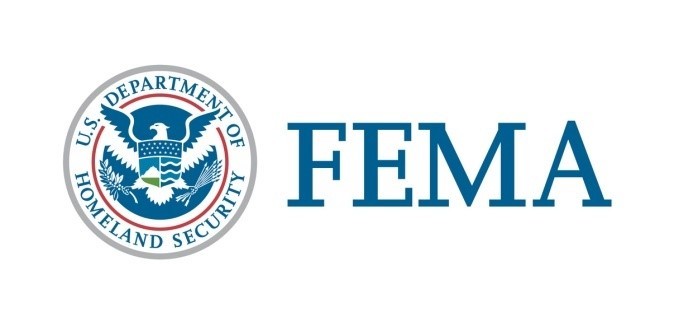|
FEMA ADVISORY – April 10, 2020
Coronavirus (COVID-19) Pandemic
Whole-of-America Response
Attached you will find today’s FEMA Daily Briefing Points and a Reference Document for Messaging and Resource Links for the Whole-of-America response to coronavirus (COVID-19) pandemic. These briefing points include Topline Messages, as well as Supply Chain Task Force; By the Numbers; FEMA and Department of Health and Human Services Response; and Guidance from Federal Agencies.
Topline messaging includes:
- FEMA, HHS, and our federal partners work with state, local, tribal and territorial governments to execute a whole-of-America response to COVID-19 pandemic and protect the health and safety of the American people.
- FEMA continues to expedite movement of commercially pre-sourced and commercially procured critical supplies from the global market to medical distributors in various locations across the U.S. through Project Air Bridge.
- Beginning April 10, HHS and FEMA will work with states with federal Community-Based Testing Sites to clarify whether sites want to continue as they are now, or transition to full state control.
- Under state control, CBTS sites would still receive technical assistance from the federal government and be able to request supplies through the normal FEMA systems.
- Leadership at both HHS and FEMA will consider approving extension requests by states that need additional federal assistance to manage and operate sites. A formal notice to continue must be submitted to the CBTS Task Force Leader, by either the state’s Governor or his or her representative, no later than April 9.
- The federal government will continue supporting each site through the transition process to ensure that the states can fully manage and operate their CBTS program independently. This includes providing each site with enough supplies to continue to operate for 7-14 days after the agreed upon transition date.
- After transition, states can choose to source testing kits and supplies through their standard ordering process or to request assistance from FEMA using the standard Resource Request Process through the appropriate FEMA Region.
- States may also seek reimbursement for eligible expenses associated with running their sites through FEMA’s Public Assistance program. In general, activities local and state governments are conducting at CBTS are eligible for reimbursement under the Public Assistance program, subject to a cost share.
- To date, Community Based Testing Sites have screened over 85,000 individuals.
- On April 8, HHS announced the first contract for ventilator production rated under the Defense Production Act, to General Motors. A second contract was awarded to Philips on the same day for ventilator production.
- The Philips contract was for $646.7 million for the delivery of 2,500 ventilators to the Strategic National Stockpile by the end of May 2020 and a total of 43,000 ventilators to be delivered by the end of December 2020.
- GM’s contract, at a total contract price of $489.4 million, is for 30,000 ventilators to be delivered to the Strategic National Stockpile by the end of August, with a production schedule allowing for the delivery of 6,132 ventilators by June 1.
- Data and information-sharing are critical for moving forward in this response and equipping areas expected to be the next medical hot spots.
- Considering both scarcity of ventilators in the Strategic National Stockpile (SNS) and current capacity of the private sector to meet demand, the federal government has adopted a process to manage allocation of federal ventilator resources to ensure the right amount of ventilators are shipped to the to the right states to sustain life within a 72-hour window.
- Emergency managers and public health officials submit requests for ventilators to FEMA/HHS, providing detailed data on total medical/ hospital beds; total acute care (ICU) beds; normal occupancy; predicted surge occupancy; and number of ventilators available in the state.
- States can send requests outside of the 72-hour window for consideration by the federal government; allocation decisions and/or shipments, however, should not be expected until the state is within the immediate 72-hour window.
- On April 8, HHS, through the Health Resources and Services Administration awarded more than $1.3 billion to 1,387 health centers. These centers will help communities across the country detect coronavirus; prevent, diagnose, and treat COVID-19; and maintain or increase health capacity and staffing levels to address this public health emergency.
- On April 3, President Trump issued “Memorandum on Allocating Certain Scarce or Threatened Health and Medical Resources to Domestic Use” directing DHS and FEMA, in consultation with the HHS, to use the Defense Production Act to keep scarce medical resources within the United States for domestic use. CBP is assisting FEMA in temporarily detaining export shipments of PPE. PPE subject to this policy includes: N95 respirators, and a variety of other respirators; surgical masks; and, surgical gloves.
Contact Us
If you have any questions, please contact FEMA Office of External Affairs, Congressional and Intergovernmental Affairs Division:
Follow Us
Follow FEMA on social media at: FEMA online, on Twitter @FEMA or @FEMAEspanol, on FEMA Facebook page or FEMA Espanol page and at FEMA YouTube channel.
Also, follow Administrator Pete Gaynor on Twitter @FEMA_Pete.
FEMA Mission
To help people before, during and after disasters.


|